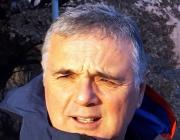Abstract:
A short shear (SH) wave profile was collected as a part of a wider experiment involving P- and S-wave reflection and refraction measurements for further processing. The purpose of the experiment was to examine the efficiency of ultra shallow bedrock surface by SH reflection imaging commonly implemented in engineering applications. The original SH data suffer from direct, refracted, guided and surface waves interference. In some Common Shot Gathers the presence of significant P wave energy is also obvious, despite the use of special designed SH-wave detectors and the use of a pure horizontal energy source, i.e. a hydraulic seismic generator device. We tested the efficiency of successive processing steps focusing on multiple energy attenuation, followed by the implementation of a technique for reducing the source generated noise, both based on forward and reverse linear and parabolic Radon transformations. The proposed scheme was applied on the data collected along a 49-shot records SH wave reflection profile.

